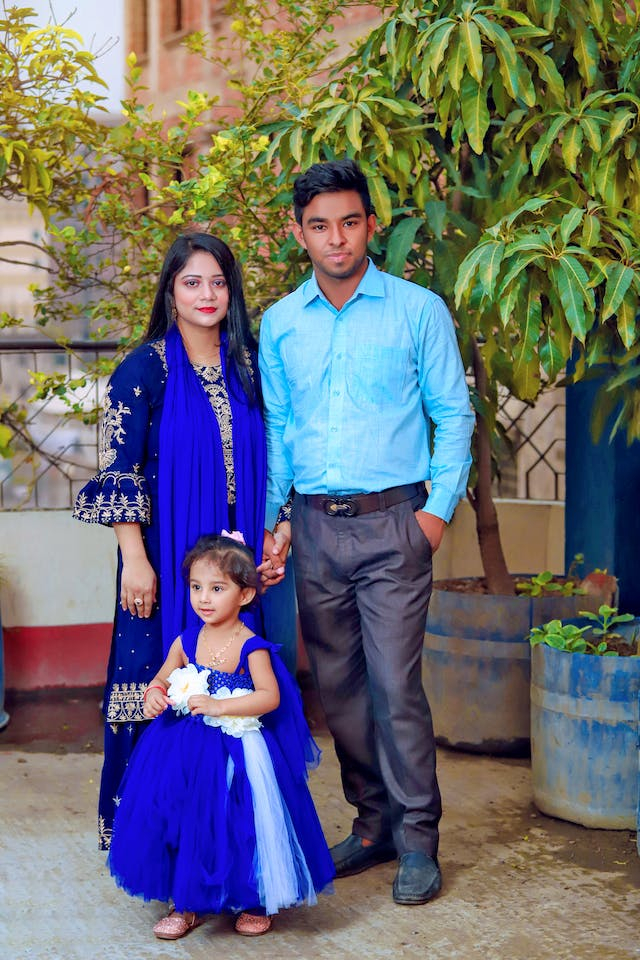Top 12 Compare and Contrast Essay Examples on Sociology
Students are encouraged to debate topics of comparison and contrast to promote holistic thinking. Students can practice their analytical and persuasive skills ... read more...by writing about comparing and contrasting issues, creating lively conversations. This collection of essay topics encourages students to explore sociological issues to better understand the world. Below are compare and contrast essay examples on sociology carefully selected by Toplist.
-
Essay topic: Eastern Family Traditions vs. Western Family Traditions
Answer:
Eastern and Western family traditions exhibit profound cultural variations, shaping the dynamics of family life in distinctive ways. The Eastern and Western perspectives on family values, roles, and ceremonies offer a rich tapestry of diversity.
One significant contrast lies in the emphasis on collectivism in Eastern traditions and individualism in Western ones. Eastern families often prioritize interdependence and mutual support, valuing the needs of the group over personal desires. In contrast, Western societies often celebrate individual achievements and independence, fostering a sense of autonomy within the family structure.
Ceremonies and rituals further highlight the differences. Eastern family traditions often revolve around elaborate rituals deeply rooted in centuries old customs. Whether it's a traditional tea ceremony in Japan or a grand wedding celebration in India, these rituals play a pivotal role in binding the family together. In the West, ceremonies tend to be more secular and focused on personal choices. Wedding ceremonies, for example, may vary widely, reflecting the couple's preferences rather than adhering to long standing cultural norms.
The roles of family members also diverge between the two traditions. Eastern families may have more defined and hierarchical roles, with clear expectations for each member. Elders are often revered, and their wisdom is highly valued. In the West, roles can be more fluid, with an emphasis on equality and shared responsibilities. Family decisions are often made collectively, and each member input is considered.
However, amidst these differences, there are universal themes that bridge the gap. Both Eastern and Western traditions place immense importance on family as a foundational unit. Love, care, and the desire for a better future for the younger generation are common threads that run through both traditions.
In conclusion, Eastern and Western family traditions diverge in their approach to individualism, ceremonies, and roles within the family. While Eastern traditions often reflect collectivism, intricate rituals and defined roles, Western traditions lean towards individualism, personalized ceremonies, and more fluid familial roles. Despite these differences, the shared values of love and family unity remain at the core of both traditions.
Photo by Emma Bauso via pexels 
Photo by Agung Pandit Wiguna via pexels -
Essay topic: Capitalism vs. Socialism
Answer:
Capitalism and socialism represent two contrasting economic and political systems, each with its own set of principles and implications for society. The debate between these two ideologies has shaped much of the political and economic discourse throughout history.
Capitalism, characterized by private ownership of the means of production and a free market economy, places a premium on individual initiative and competition. In a capitalist system, businesses are privately owned, and prices are determined by market forces. Advocates argue that capitalism fosters innovation, economic growth, and individual freedom. It allows individuals to pursue their self interest, driving entrepreneurship and efficiency.
On the other hand, socialism emphasizes collective or government ownership of the means of production and a more centrally planned economy. The goal is to reduce economic inequality and ensure that resources are distributed more equitably. Proponents of socialism argue that it promotes social welfare, reduces poverty, and prevents the concentration of wealth in the hands of a few. In a socialist system, there is often a greater emphasis on social services like healthcare, education, and housing, which are sometimes provided or heavily regulated by the state.
One key distinction is the role of government. Capitalism generally advocates for limited government intervention, emphasizing the efficiency of the free market. In contrast, socialism calls for a more active role of the state in the economy, often with the aim of mitigating social inequalities.
Critics of capitalism argue that it can lead to income inequality, exploitation, and a lack of social safety nets. They point to instances where profit motives may conflict with broader societal interests, such as environmental concerns or public health. On the other hand, critics of socialism argue that centralized planning can stifle individual initiative, hinder economic growth, and result in inefficiencies.
Many contemporary societies adopt mixed economic systems that blend elements of both capitalism and socialism. The balance between these two systems varies, with some countries leaning more towards capitalism, like the United States, and others towards socialism, like the Scandinavian countries. The ongoing debate between capitalism and socialism remains a fundamental aspect of political and economic discussions, as societies grapple with finding the right balance between individual freedom and social welfare.
Photo by Lisa Fotios via pexels 
Photo by Creative Vix via pexels -
Essay topic: Urban Living vs. Rural Living
Answer:
Urban living and rural living present starkly different lifestyles, each with its own advantages and disadvantages. The choice between these two environments often hinges on personal preferences, career opportunities, and lifestyle priorities.
Urban living is characterized by the hustle and bustle of city life. Cities are centers of economic activity, offering diverse job opportunities, cultural experiences, and entertainment options. The fast paced urban lifestyle often comes with convenience, easy access to amenities, and a wide range of services. However, it also brings challenges such as congestion, high living costs, and a more competitive and stressful environment.
In contrast, rural living offers a serene and close to nature lifestyle. Rural areas are marked by open spaces, cleaner air, and a strong sense of community. Life in the countryside tends to be quieter and less hectic, fostering a connection to the natural environment. However, rural living may also be associated with limited access to job opportunities, educational institutions, and healthcare facilities. The pace of life can be slower, which appeals to those seeking a more laid back and contemplative existence.
One notable difference is the sense of community. Rural areas often boast tight knit communities where people know their neighbors and work together to address common challenges. In urban settings, the community may be more diverse, but individual connections can be more transient and less personal.
The cost of living is another critical factor. Urban areas typically have higher living costs, including housing, transportation, and daily expenses. In rural areas, the cost of living is often lower, but it may come at the expense of certain amenities and job opportunities.
Ultimately, the choice between urban and rural living depends on individual preferences and priorities. Urbanites value the vibrancy, cultural richness, and professional opportunities that cities offer, while those opting for rural living prioritize tranquility, a close connection to nature and a sense of community. As individuals weigh the pros and cons, the decision often reflects their values, career aspirations, and the kind of lifestyle they find most fulfilling.
Photo by Aleksandar Pasaric via pexels 
Photo by Pixabay via pexels -
Essay topic: Individualistic Societies vs. Collectivist Societies
Answer:
Individualistic societies and collectivist societies represent two distinct cultural paradigms, shaping the values, social norms, and interpersonal relationships within a community. These contrasting approaches to societal organization have far reaching implications for individuals and their roles within the larger social fabric.
Individualistic societies, commonly found in Western cultures, prioritize personal autonomy and individual achievement. These societies champion the rights and freedoms of the individual, emphasizing self-expression, personal goals, and independence. In such cultures, success is often measured by personal accomplishments, and there is a greater emphasis on individual rights and privacy. The pursuit of personal happiness and fulfillment is a central tenet.
In contrast, collectivist societies, prevalent in many Eastern cultures, prioritize the welfare of the group over individual desires. Harmony, interdependence, and loyalty to the community are highly valued. Collectivist cultures emphasize the importance of social cohesion, family ties, and group well being. Individuals in such societies often define their identity through their roles within the family, community, or social group. The success of an individual is closely tied to the success and stability of the collective.
The impact of these cultural differences is evident in various aspects of life, including relationships, decision making processes and social expectations. In individualistic societies, relationships may be more transient and based on personal choice, while collectivist societies may prioritize long lasting familial and communal ties. Decision making in individualistic cultures often involves personal preferences and individual rights, while collectivist cultures may prioritize group consensus and societal expectations.
While both cultural paradigms have their merits, they also pose challenges. Individualistic societies may grapple with issues of social isolation and a potential lack of social support, while collectivist societies may face challenges in fostering individual creativity and personal expression.
In conclusion, the dichotomy between individualistic and collectivist societies reflects the diversity of human cultures and the various ways communities organize themselves. Whether valuing individual autonomy or prioritizing collective well being, these cultural orientations shape the fabric of society, influencing interpersonal relationships, societal expectations and the pursuit of happiness.
Photo by Labskiii via pexels 
Photo by Belle Co via pexels -
Essay topic: Monogamy vs. Polygamy
Answer:
Monogamy and polygamy represent two distinct approaches to romantic and marital relationships, each with its own set of cultural, social, and personal implications. The choice between these relationship structures often reflects cultural norms, religious beliefs, and individual preferences.
Monogamy, the practice of having only one spouse at a time, is the predominant form of marital arrangement in many cultures worldwide. It is often associated with ideas of fidelity, commitment, and exclusivity. Monogamous relationships are built on the principle of one to one connection, where partners share emotional, financial, and social responsibilities. Monogamy is generally viewed as a stabilizing force in societies, providing a framework for raising children and maintaining familial and societal order.
In contrast, polygamy encompasses various forms, with the most common being polygyny and polyandry. Polygamous societies often cite cultural or religious reasons for adopting this relationship structure. Advocates argue that polygamy can address issues such as infertility, provide economic support for larger families, and strengthen social ties within a community.
The dynamics within these relationship structures differ significantly. Monogamous relationships typically prioritize exclusivity and deep emotional connection. Partners navigate challenges together, relying on the strength of their bond. Polygamous relationships, on the other hand, require navigating the complexities of multiple romantic connections and potential hierarchies within the group.
Challenges arise in both systems. Monogamy may face issues related to infidelity, while polygamous relationships may grapple with jealousy, power imbalances, and the complexities of managing multiple partnerships. Cultural and religious contexts heavily influence societal acceptance of either arrangement.
Ultimately, the choice between monogamy and polygamy is deeply personal and shaped by cultural and individual factors. Both systems have their merits and challenges, and the success of any relationship structure depends on the communication, trust, and mutual respect between the involved parties.
Photo by Asad Photo Maldives via pexels 
Photo by Andrea Piacquadio via pexels -
Essay topic: Nuclear Families vs. Extended Families
Answer:
Nuclear families and extended families represent two distinct models of familial organization, each with its own dynamics, advantages, and challenges. The structure chosen often depends on cultural traditions, societal norms, and individual preferences.
Nuclear families consist of parents and their children living together in a separate household. This model emphasizes a more independent and self contained family unit. In nuclear families, decision making is typically centralized, and the focus is on the immediate family members. The advantages include increased privacy, autonomy and a more streamlined decision making process. However, challenges may arise in terms of limited support systems, especially in times of need.
In contrast, extended families encompass a broader network that extends beyond parents and children to include grandparents, aunts, uncles and cousins. This model emphasizes a multigenerational and interconnected approach to family life. Extended families often provide a robust support system, sharing responsibilities and resources. The collective wisdom of older generations contributes to the upbringing of children, and there is a sense of shared familial history. However, extended families may encounter challenges related to privacy, conflicts of interest and complex interpersonal dynamics.
One key difference lies in the distribution of responsibilities and caregiving. Nuclear families often bear the primary responsibility for child rearing and caregiving tasks within their immediate unit. Extended families, on the other hand, distribute these responsibilities more broadly among the various members, creating a web of mutual support.
The societal and cultural context heavily influences the prevalence and acceptance of these family structures. In many Western societies, nuclear families are the predominant model, emphasizing autonomy and individualism. In contrast, in several Eastern cultures, extended families are more common, emphasizing communal support and interconnectedness.
In conclusion, the choice between nuclear and extended families reflects cultural values, societal norms, and individual preferences. Nuclear families offer autonomy and streamlined decision making, while extended families provide a broader support network and shared responsibilities. Each model has its strengths and challenges, and the success of a family structure often depends on effective communication, mutual respect and a deep understanding of familial roles and dynamics.
Photo by Nikhil Singh via pexels 
Photo by Ibrahim Hossein via pexels -
Essay topic: Secular Societies vs. Religious Societies
Answer:
Secular societies and religious societies represent two distinct paradigms of societal organization, each shaping the values, institutions, and cultural fabric in unique ways. The contrast between these models is evident in their approaches to governance, education, and the role of belief systems in public life.
Secular societies are characterized by a separation of religion and state, emphasizing a neutral stance on matters of faith in public institutions and policies. Governance in secular societies is based on legal frameworks rather than religious doctrines. This separation fosters religious freedom, allowing individuals to practice their faith without state interference. Education is typically secular, with a focus on science, critical thinking, and a broad understanding of various belief systems.
Religious societies, on the other hand, integrate religious beliefs and doctrines into the fabric of daily life and governance. The legal system and social norms are often influenced by religious principles. Education in religious societies may incorporate religious teachings, emphasizing moral values and adherence to specific belief systems. Governance may be guided by religious authorities or leaders.
The role of individual freedoms and rights differs significantly. Secular societies prioritize individual freedoms, including the freedom of religion or the choice to practice no religion at all. This approach fosters diversity and pluralism. In contrast, religious societies may place certain restrictions on individual freedoms to align with religious doctrines, leading to a more homogenous cultural and social landscape.
Cultural and moral values are often shaped by the prevailing worldview. Secular societies tend to derive moral values from ethical frameworks and legal systems, emphasizing human rights and social justice. In religious societies, moral values are often derived from religious scriptures and teachings, guiding personal conduct and societal norms.
While secular and religious societies may coexist, the balance between the two varies. Some societies blend elements of both, creating a nuanced approach that accommodates diverse belief systems. In contrast, others maintain a clear separation or a predominant reliance on religious principles in shaping societal structures.
In conclusion, the dichotomy between secular and religious societies reflects the diversity of human cultures and governance models. The balance between religious influence and secular principles shapes societal norms, legal systems, and individual freedoms. Understanding the nuances of each model is essential for fostering coexistence and promoting a diverse and inclusive global society.
Photo by Alex Azabache via pexels 
Photo by Pixabay via pexels -
Essay topic: Traditional Education vs. Homeschooling
Answer:
Traditional education, typically conducted in brick and mortar schools, and homeschooling, an alternative where parents take on the role of educators, represent two distinct approaches to educating children. The comparison between these models extends to aspects such as learning environment, socialization, and flexibility.
In traditional education, students attend a physical school where teachers deliver lessons in structured classrooms. This model provides a standardized curriculum, often regulated by educational authorities. The learning environment is characterized by routine, set schedules, and interaction with peers. The classroom setting aims to prepare students for a collective learning experience, promoting social skills and teamwork.
Homeschooling, on the other hand, involves parents guiding their children's education within the home environment. This approach offers flexibility in curriculum selection, allowing parents to tailor learning materials to their child's pace, interests, and learning style. Homeschooled children often have the opportunity for more individualized attention, fostering a personalized and adaptive learning experience. However, the absence of a traditional classroom setting may limit social interaction with peers.
Socialization is a notable point of contrast. Traditional education exposes students to a diverse group of peers, providing opportunities to develop social skills and cultural understanding. Extracurricular activities and group projects contribute to this social development. In homeschooling, socialization may require intentional efforts, such as participation in community events, sports, or organized activities, to ensure that children interact with peers beyond the immediate family circle.
Flexibility is another distinguishing factor. Traditional education follows a set academic calendar, with fixed schedules and standardized testing. Homeschooling allows for greater flexibility in terms of scheduling, pace of learning, and the ability to incorporate real life experiences into education. This flexibility is particularly beneficial for families with unique circumstances or for students with specific learning needs.
While both traditional education and homeschooling aim to impart knowledge, the choice between them often hinges on individual preferences, the needs of the child, and the resources available to the family. Some families value the structure and social aspects of traditional education, while others appreciate the flexibility and personalized approach of homeschooling. Ultimately, the effectiveness of either approach depends on the commitment of parents, the learning environment provided, and the alignment with the educational goals for the child.
Photo by Max Fischer via pexels 
Photo by Andrea Piacquadio via pexels -
Essay topic: Ageing Populations in Japan vs. Young Populations in Nigeria
Answer:
Japan and Nigeria represent two contrasting demographic landscapes, with Japan grappling with an ageing population while Nigeria experiences the challenges and opportunities associated with a predominantly young population. These demographic differences have significant implications for social, economic, and healthcare systems in each country.
In Japan, the ageing population is characterized by a high life expectancy and low birth rates. The elderly population constitutes a substantial percentage, leading to concerns about the sustainability of social welfare systems. The challenges include increased healthcare costs, a shrinking workforce, and a potential strain on pension systems. However, Japan also benefits from a highly educated and skilled older population, contributing to the economy through their knowledge and experience.
In Nigeria, the population is predominantly young, with a significant percentage under the age of 25. This youthfulness presents opportunities for economic growth, innovation, and a potentially robust workforce. However, challenges arise in ensuring that there are adequate educational and employment opportunities to harness the demographic dividend. Issues such as youth unemployment and the need for infrastructure development to support a growing population become prominent.
Economic implications differ significantly. Japan faces the challenge of maintaining economic growth with a declining workforce, potentially leading to a stagnant economy. In contrast, Nigeria has the potential for a demographic dividend, with a growing young population that can contribute to economic development. However, the realization of this dividend depends on effective policies addressing education, employment, and infrastructure.
Healthcare systems are also affected. In Japan, the emphasis is on providing comprehensive and specialized care for the elderly, addressing age related health issues and promoting a healthy ageing population. In Nigeria, there is a need for accessible and affordable healthcare to support the young population, focusing on maternal and child health, infectious diseases, and preventive measures.
In conclusion, the demographic contrast between ageing populations in Japan and young populations in Nigeria highlights the diverse challenges and opportunities each country faces. Japan navigates the complexities of an ageing society, focusing on sustaining social welfare and healthcare systems. Meanwhile, Nigeria grapples with harnessing the potential of its youthful population, requiring investments in education, employment, and healthcare to unlock the demographic dividend.
Photo by Tristan Le via pexels 
Photo by THIS IS ZUN via pexels -
Essay topic: Ethnic Enclaves vs. Assimilated Communities
Answer:
Ethnic enclaves and assimilated communities represent two distinct models of immigrant settlement, each shaping the dynamics of cultural integration and preservation. The comparison between these models extends to aspects such as social cohesion, cultural identity, and the interaction between the immigrant community and the host society.
Ethnic enclaves refer to areas where immigrant communities concentrate, forming neighborhoods or districts with a strong cultural and ethnic identity. These enclaves often preserve the traditions, language, and customs of the home country, creating a sense of familiarity and support for newcomers. The close knit nature of ethnic enclaves fosters social cohesion, providing a support system for individuals navigating the challenges of settling in a new country. However, the risk lies in potential isolation from the broader society, limiting interaction and integration with the host culture.
In contrast, assimilated communities emphasize integration into the broader society, with immigrants adopting the customs, language and norms of the host country. The focus is on blending into the mainstream culture, often leading to a more diverse and interconnected community. Assimilated communities benefit from increased opportunities for social and economic integration, with individuals participating in various aspects of the host society. However, the challenge lies in the potential loss of cultural identity and the risk of cultural homogenization.
The level of cultural preservation and interaction with the host society differs significantly. Ethnic enclaves often maintain a strong sense of cultural identity, with businesses, cultural centers, and religious institutions reflecting the heritage of the community. Assimilated communities, on the other hand, may exhibit greater cultural diversity but risk diluting specific cultural practices over time.
The relationship between ethnic enclaves and assimilated communities reflects the complexity of immigrant experiences. Finding a balance between preserving cultural identity and participating in the broader society is a continual challenge. Successful integration often involves aspects of both models, with immigrants maintaining cultural ties while actively engaging with the host culture. The dynamics between these two models contribute to the rich tapestry of multiculturalism and diversity within immigrant communities worldwide.
Photo by jonathan emili via pexels 
Photo by cottonbro studio via pexels -
Essay topic: Role of Women in Western Societies vs. Middle Eastern Societies
Answer:
The role of women in Western and Middle Eastern societies reflects the diverse cultural, historical, and social contexts that shape gender dynamics. While both regions have witnessed significant changes in women's status, there remain distinct differences in the opportunities, expectations, and challenges women face.
In Western societies, particularly in recent decades, there has been a notable shift towards gender equality. Women in the West often have access to education, career opportunities and political participation. The emphasis on individual rights and freedoms has led to advancements in women's rights, with legal frameworks promoting equality in areas such as employment, education, and personal autonomy. While challenges persist, Western women have made significant strides in breaking through traditional gender roles.
Conversely, the role of women in many Middle Eastern societies is often influenced by cultural and religious traditions. In some conservative Middle Eastern societies, there are expectations surrounding modesty, family roles, and limited mobility for women. However, it is essential to recognize the diversity within the region. In more progressive Middle Eastern countries, women have gained greater access to education, employment, and public life. Initiatives aimed at empowering women and challenging traditional gender norms are increasingly prominent.
The legal frameworks and societal attitudes toward women differ significantly. Western societies generally have more comprehensive legal protections for women rights, covering areas such as workplace discrimination, reproductive rights, and domestic violence. Middle Eastern societies often grapple with a complex interplay between legal systems and cultural norms, with varying degrees of legal protection for women.
While both Western and Middle Eastern societies continue to navigate the path towards gender equality, the approaches and challenges are distinct. Western societies, influenced by a history of feminist movements and progressive ideologies, have made significant strides in advancing women's rights. Middle Eastern societies, rooted in diverse cultural and religious traditions, are undergoing transformative shifts, with some regions witnessing progressive changes while others continue to grapple with more traditional gender norms. The role of women in both contexts is dynamic and evolving, shaped by a complex interplay of historical legacies, cultural norms, and contemporary aspirations.
Photo by Westley Ferguson via pexels 
Photo by Jack Sparrow via pexels -
Essay topic: Developed Countries vs. Developing Countries
Answer:
Developed countries and developing countries represent two categories on the global economic spectrum, each with distinct characteristics, levels of economic development, and social indicators. The comparison between these two categories extends to aspects such as economic prosperity, infrastructure, and quality of life.
Developed countries, often found in North America, Western Europe and parts of Asia, boast advanced economies with high levels of industrialization and technological sophistication. These nations typically have well-established infrastructure, efficient healthcare systems and high standards of living. Developed countries often prioritize innovation, education and research, contributing to economic stability and a robust job market. However, challenges such as income inequality and environmental concerns persist.
In contrast, developing countries, found predominantly in Africa, parts of Asia, and Latin America, face various economic challenges, including lower levels of industrialization and technological advancement. Infrastructure may be less developed, with limited access to essential services such as healthcare and education. Developing countries often grapple with issues like poverty, insufficient access to clean water, and inadequate sanitation. However, many of these nations are experiencing rapid economic growth and making strides in improving living conditions.
Economic indicators highlight the disparities between developed and developing countries. Developed nations generally have higher GDP per capita, better healthcare outcomes and greater access to education. In developing countries, there may be a more significant reliance on agriculture, lower levels of industrialization, and a higher proportion of the population engaged in informal employment.
The contrast extends to global inequalities, with developed countries often holding more influence in international organizations and financial institutions. This influence can shape global policies, trade agreements, and development initiatives, influencing the trajectory of developing nations.
While the distinction between developed and developing countries provides a broad framework for understanding global economic disparities, it is essential to recognize the diversity within each category. Some developing countries are experiencing rapid growth and development, while certain developed nations may face economic challenges. The dynamic nature of global economics underscores the ongoing need for international cooperation and support to address the complex issues facing both developed and developing countries.
Photo by Nout Gons via pexels 
Photo by Arnie Chou via pexels























